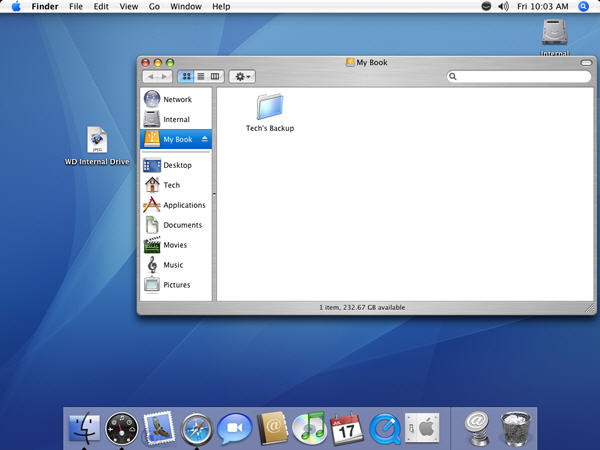Download Google Drive To External Hard Drive
Cloud storage isn’t designed to replicate hard drives. If you’re looking to backup hundreds of gigabytes of data and preserve your file system structure, a dedicated online backup service will save you money and headaches. That said, many people use Google Drive to backup files and, for some, that approach may work.
- Download External Hard Drive To Laptop
- Download Google Drive To External Hard Drive Mac
- How To Download From External Hard Drive
- Download Google Drive To External Hard Drive Software
How to put Google Drive folder on an external drive submitted 4 years ago by Grantbg I have been trying to get Google Drive work on an external hard drive (otherwise it doesn't save space on the internal hard drive, as it is a copy of everything backed up to Google Drive on the net). How to Import and Export Documents in Google Drive. By Melissa Murphy 12 Dec 2016. Length: Medium. On the screen above click Download to download the file locally. Importing your files and folders from your hard drive to Google Docs gives you the ability to access your documents from anywhere you have an Internet connection.
Cloud storage and other services suffice for backup when you don’t have that many folders and files to safeguard. In those cases, it will probably save you money over opting for one of the best online backup providers. In this guide, we’ll show you how to use Google Drive to backup your data, so you can decide if it is the most surefire way to guard against loss.
There are a few ways to backup data using Google Drive. On your desktop, you can make use of the Google Drive sync folder, though it has drawbacks. Google Drive also has a backup feature that allows you to set up continuous, one-way sync between a desktop folder and the cloud. That is the more reliable method of the two.
Finally, the Google Drive smartphone app is a great way to make sure your photos and videos are automatically uploaded to the cloud. We feature that approach in our article on how to backup Android, so we won’t spend much time explaining it here.
Backup with Google Drive Sync
Most clouds storage providers use sync folders. In appearance, there’s little to distinguish them from any other file system folder.
The difference is that they are connected to the cloud. Files stored in them are kept both in the cloud and on your hard drive. The primary purpose of the sync folder isn’t backup, but productivity. With multiple sync folders stored on multiple machines, you can see changes made to a file on one device reflected on another in near-real-time.
The Problem with Google Drive Sync for Backup
One issue with using the sync folder for backup is that it doesn’t preserve your file structure. Because files have to be moved in to the sync folder, your existing file tree is thrown out the window.
The best you can do is try to copy that structure in your sync folder by setting up multiple folders and sub-folders, which is tedious, messy and often rife with errors, such as missed folders and files.
The bigger issue is that files deleted in your sync folder will get deleted in the cloud and on your other synced devices. Unlike some cloud storage providers, Google doesn’t delete those files outright, though. It sends them to a trash bin.
If you delete the files from the trash bin by accident, you’re probably out of luck. On occasion, an email to Google might help retrieve deleted content, but that’s unusual.
The other option is to try to recover the deleted items using data recovery software. We outline the top options in our best data recovery guide, but they’re far from foolproof, especially if you don’t act quickly. We’ve had the most success with Stellar Phoenix Data Recovery, but it’s not the only viable option.
Google Drive Backup and Sync
Google replaced its desktop client with what it calls “backup and sync” in 2017. Available for PC and Mac, the new tool can be used to backup specific folders in your file system without moving them them to your sync folder.
If you haven’t upgraded to the new client, you’ll need to download it from the Google Drive page and sign in to it.
Launch the tool by right-clicking the “backup and sync” icon in your taskbar. Click the three-dots menu in the top right and select “preferences.” That will open a bigger window with three tabs down the left side: “my laptop,” “Google Drive” and “settings.”

The first tab, “my laptop,” can be used to tag folders for backup to Google Drive. You may see folders already listed, such as documents and pictures. Those are just suggestions. As long as the checkboxes beside them aren’t clicked, no data is being sent to the cloud.
And 'Impatient' pulls a neat trick there, too: when that pivotal moment hits, everything else falls away just as the track should be surging forward. 'Impatient' is so quiet that you barely notice it creeping up on you. London on da Track's beat is as sheer and flowy as anything on the original Late Nights, and it captures the same glowing mood, highlighting Jeremih's voice without distracting from it. He starts off nearly muttering, before elongating his syllables at the start of the chorus and slipping into falsetto so quickly you'll feel his breath on the back of your neck before you hear the words.  Jeremih's vocal performance is a master class in, well, patience.
Jeremih's vocal performance is a master class in, well, patience.
To add folders, click “choose folders.” A file system browser window that you can use to add folders to your backup plan will open.
Once you’ve made your selections, you can alter the backup behavior of Google Drive by clicking “change.” That will give you an option to only backup photos and videos, as well as selection boxes to backup RAW data and screenshots.
There’s an “advanced” section to add file type exclusions. For example, you might want to exclude temporary files from your backup to conserve space.
Backup and Sync Photo Size
There are two options for uploading photos to Google Drive: “high quality” and “original size.” High quality uploads don’t affect your storage space. You can upload as many images as you want with no penalty. The downside is that there’s a 16MB cap. Photos larger than that are reduced in size, losing resolution in the process.
The second option, “original size,” maintains file size and resolution but consumes Google Drive space.
Backup and Sync Removing Files
This next part is critical to using Google Drive to backup your files. In the backup and sync preferences window, there’s a header that reads, “removing items.” Below it, there are three options.
By selecting “remove items everywhere,” if you delete a file on your computer that’s backed up to Google Drive, it will be deleted in Google Drive, too. Instead, you should select the second option: “don’t remove items everywhere.” That way, files stay in Google Drive even if they’re deleted on your computer.

There’s a third option that will prompt you for a response about whether to delete a file.
Continuous Backup with Google Drive Backup and Sync
Download External Hard Drive To Laptop
Google Drive protects files using continuous backup. That means as soon as a file is added to a folder tagged for backup or a file is edited, those changes get backed up to Google Drive in near-real-time.
Download Google Drive To External Hard Drive Mac
Most online backup services offer continuous backup. It’s the safest way to ensure your files are protected. Most backup services also let you opt out of continuous backup and use scheduled backups, instead. Google Drive does not.
We recommend keeping backup running, anyway, but there are circumstances where it might make more sense to only run backups at night. For example, if you have multiple programs running at once or are dealing with terabytes of data, backup processes could affect system resources.
If that causes issues, you can adjust Google Drive’s network settings from the “settings” tab. By default, Google doesn’t limit upload or download speeds, but you can cap them to decrease load.
Final Thoughts: Restoring Files Using Backup and Sync
One perk of a dedicated online backup tool is that it eases the restoration process should your hard drive need to be replaced. Google Drive doesn’t have a “recovery” button. That’s a huge disadvantage, since you’ll have to rebuild your file system by downloading folders and files from Google Drive and arranging them how you want.
How To Download From External Hard Drive
As such, we recommend sticking with Backblaze, CloudBerry Backup, Acronis True Image or another top online backup provider. The primary goal of Google Drive Backup and Sync is to make it easier to get your files into the cloud without having to cram everything into a dedicated sync folder.
Sign up for our newsletter
to get the latest on new releases and more.
It works much better for restoring mobile settings, at least, on Android. We have an article dedicated to the best backup for mobile offerings that we didn’t include Google Drive in, but we probably should have. Our Android backup article features Google Drive, though, which has nice features such as automatic photo and video uploads.
If you have any questions about how to use Google Drive Backup and Sync, let us know in the comments below. Thanks for reading.
Save 24 %
Backing up from Google Photos to an external hard drive -
I, like many others, use Google Photos to back up all of my devices but I also want a hard-record of all of these files for offline use. Is there a simple way to do this? The only method I have found is downloading everything onto the drive; this is overkill for the infrequent file-dump/backup. I would love to see a feature where Google Photos would automatically make a copy of it's file structure and update it when a particular HDD was plugged in. Please help!